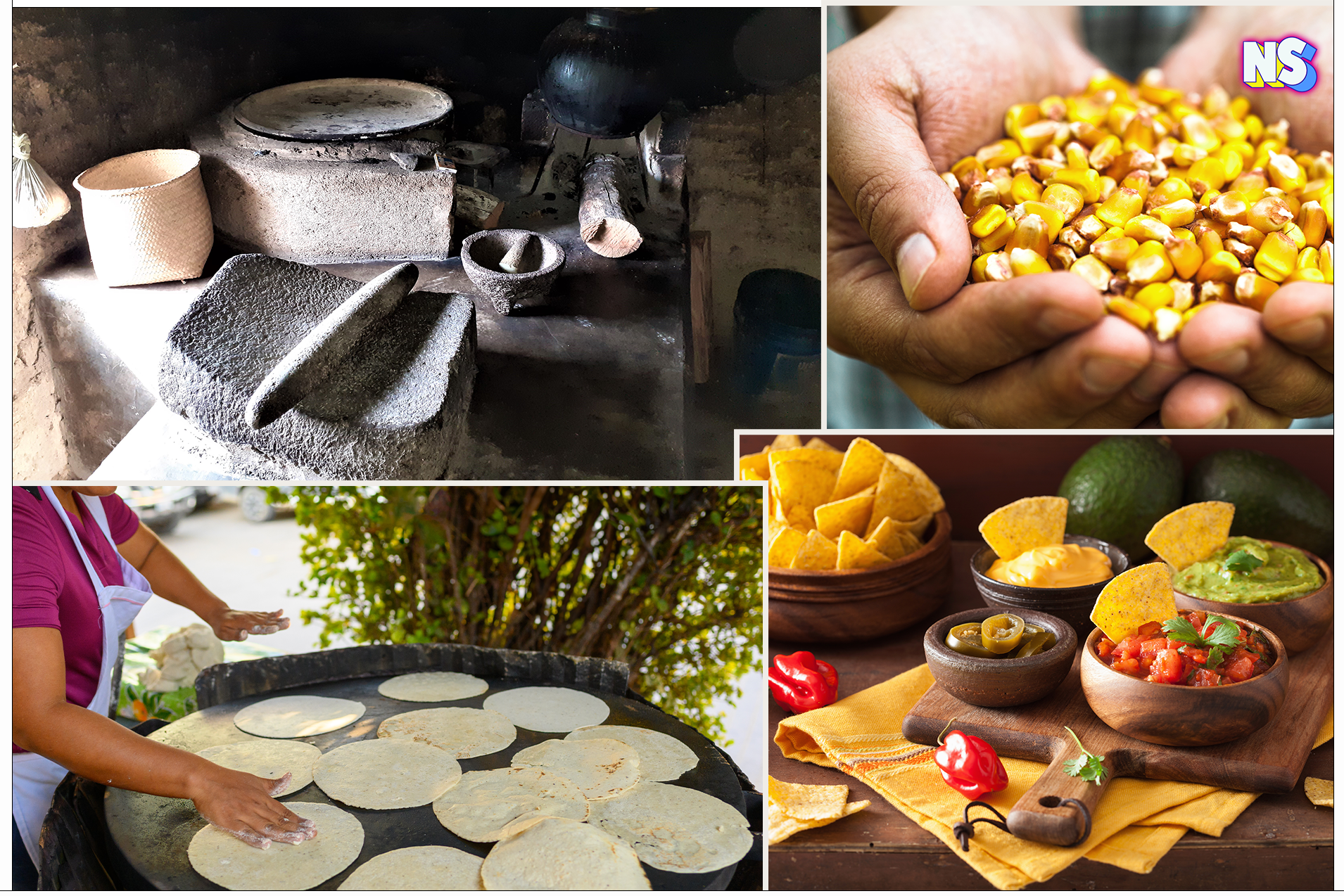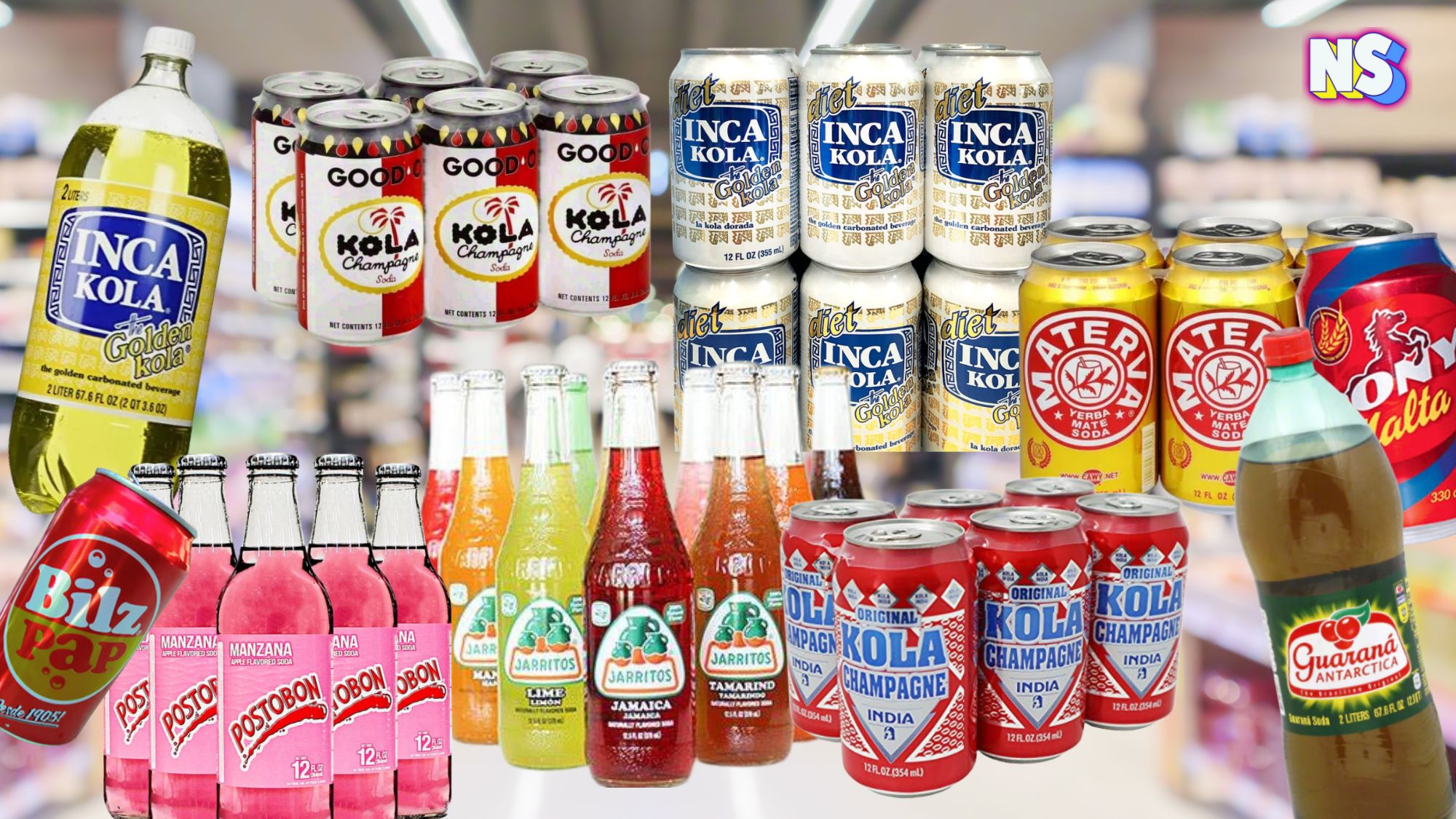Credit: Eduardo Ruiz Mondragón/Illustration by Nuestro Stories
Snacking. A great American pastime.
It’s true.
According to a study by the United States Department of Health and Human Services, snacks “are a staple of the American diet, accounting for nearly a quarter (22%) of total energy intake among adults.”
In fact, “more than 90% of U.S. adults report eating one or more snacks on any given day,” the study shows.
As avid snackers, the Nuestro Stories’ editorial team researched the origins of one of our favorite snacks (while snacking, of course): tortilla chips. This research led us to the greatest appetizer of all time: nachos. … which leads us to one of the most flavorful cuisines (still struggling to get the international respect it deserves though): Tex Mex.
During this deep dive into a culinary revolution, we find a trailblazing woman, a savvy entrepreneur, and two traditional Tex-Mex recipes with a timely twist.
The History of ‘Tort Chips’
A sole bag of Tostitos scoops or Doritos nacho chips happen to have a rich history dating back to ancient Mesoamerican civilizations, of the Aztecs and the Mayans.
The origin story of tortilla chips, or “totopos” (as they are currently called throughout Mexico), is closely tied to the cultivation and consumption of corn (which was a staple crop in the region). The tortillas – eaten in Mesoamerica for centuries – were typically made by cooking thin rounds of maize dough on a hot griddle or comal.
As for the modern triangularly-shaped bagged snacks we find in grocery stores everywhere, well, they were invented by a trailblazing Mexican-American Rebecca Webb Carranza.
“For a family party in the late 1940s, Carranza cut some of the discarded tortillas into triangles and fried them,” The Los Angeles Times explains in an article. “A hit with the relatives, the chips soon sold for a dime a bag at her Mexican delicatessen and factory at the corner of Jefferson Boulevard and Arlington Avenue in southwest Los Angeles.”
She called the new snack food – the fried triangles – “tort chips,” which eventually evolved into the term “tortilla chips.”
Carranza, who died at the age of 98, “was recognized by the tortilla industry as one of the pioneers of the commercial tortilla chip,” according to the LA Times. “In 1994 and 1995 — the only years the award was given — Carranza was among the recipients of the Golden Tortilla, created to honor about 20 industry innovators … ”
Carranza’s innovation took the country by storm.
By the 1990s, “tortillas outselling more traditional American fare, like burger rolls and hotdog buns,” The Washington Times reported.
And tortillas’ favorite sidekick salsa? That’s also a snackable hit in the U.S. Salsa beat the American classic ketchup, according to a story in the New York Times in 1992. ” … ketchup, long the king of American condiments, has been dethroned. Last year, salsa … took the condiment crown, outselling ketchup by $40 million in retail stores.”
Today, tortillas are enjoyed around the world – with a side of salsa or guacamole, of course, or as the natural foundation of any nacho dish … which leads us to another great inventor: Ignacio “Nacho” Anaya. He’s known as the father of the modern-day nacho.
An International Tortilla-Based Appetizer is Born
The origin story of nachos is believed to have its roots in Mexico, specifically in the border town of Piedras Negras, Coahuila, in the 1940s. The creation of nachos is often attributed to Anaya, a Mexican restaurateur.
According to popular legend, the story goes like this: In 1943, a group of U.S. military wives stationed at Fort Duncan, Texas, crossed the border to Piedras Negras to enjoy a meal at a local restaurant called the Victory Club.
When they arrived, the restaurant was busy, and the chef had left for the day. Ignacio Anaya, who was working at the restaurant as a maître d’, took it upon himself to whip up a quick and tasty snack for the hungry customers.
He improvised by frying tortilla chips until they were crispy, and then topping them with shredded cheddar cheese and sliced jalapeño peppers. Anaya’s creation was a hit with the American patrons, who asked him what the dish was called.
Anaya, whose nickname was “Nacho,” reportedly replied, “Nacho’s especiales,” referring to himself in the possessive form, and the dish became known as “Nacho’s special” or simply “nachos.”
“In 1960, with his star dish conquering palates around the world, Ignacio Anaya founded his own restaurant which he named Nacho’s,” according to an article about the inventor in the Mexican Daily Post.
Nachos gained popularity in the border region and gradually spread throughout the U.S. and beyond. Over time, variations of nachos emerged, with additional (perfect) toppings like guacamole, sour cream, salsa, and ground beef becoming common additions.
Nachos rightfully takes its place by chili con carne and fajitas as a dish in the tasty culinary revolution rooted in North America: Tex Mex. But does Tex-Mex cuisine get the respect it deserves? Nuestro Stories finds out.
https://nuestrostories.com/wp-content/uploads/2023/05/Sofia-Jones-Nuestro-Stories-Writer-Image-182×250.png
When Sofia Jones is not interviewing Latinx stars, or researching a variety of topics, for her iHeartRadio Gen Z Latinx podcast, she can be found fostering (and cuddling with) cute small dogs for a South Florida animal rescue nonprofit.





